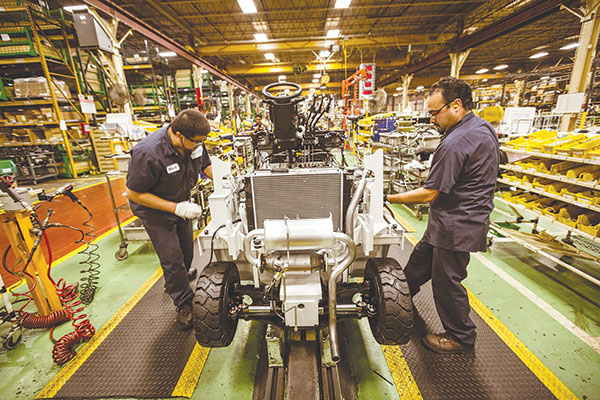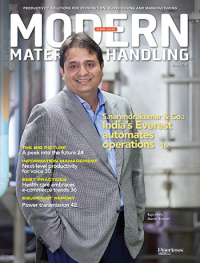Lift Truck Tips: Feeling the impact of ergonomic improvements
The science of ergonomics has changed the way forklift manufacturers and users evaluate productivity.
A comfortable forklift operator is a productive one. It’s an intuitive statement, but one that has historically been difficult to measure and manage. What is the best way to enhance comfort? What ergonomic investments or features will have the biggest impact—and at what cost?
Amid all the technological innovations inside and around forklifts, Carl Modesette, director of product engineering for UniCarriers Americas, says the science and study of ergonomics has grown significantly in the last several years. Detailed data on each task, every movement, and their cumulative effect over time has enabled OEMs and end users to quantify what was previously cloudy.
“More and more users are starting to be able to put dollars and cents to ergonomics, whether it’s avoiding costs of injuries, strains and sprains, or savings directly or indirectly tied to productivity improvements,” Modesette says. “They’re starting to look at ergonomic improvements in terms of return on investment as opposed to just an added cost or fancy feature.”
For OEMs, Modesette says the wealth of ergonomic science has granted better insights into product design. New seats with suspension help reduce the vibration operators feel on sit-down trucks and also offer increased weight adjustment ranges and lumbar support. Controls are moving away from manual and toward electronic, like steer-by-wire or fingertip hydraulic controls.
“A lot of these things are not necessarily new,” Modesette says, “but because end users and fleet managers have better awareness of ergonomics, they’re requesting and adopting these features at a higher rate.”
New technologies geared toward productivity also promise substantial ergonomic benefits, he adds, citing increased interest in remote control options, especially in low-level picking operations.
Using a remote control to advance the forklift reduces the amount of times an operator has to get on and off the vehicle. Each mount and dismount introduces shock to the operator body.
Another aspect of ergonomics is visibility and awareness, Modesette says. How well can the operator see; how aware is he or she of surroundings; and how aware are other people around the equipment? There has been “huge interest,” he says, in spotlights designed to alert nearby pedestrians and cameras to improve operator visibility at the forks. Fork-mounted cameras help operators engage loads more accurately and minimize the frequency and duration of craning one’s neck.
“The next leap forward will involve integration of various tools into a common platform,” Modesette says. “We’re not far away from replacing old school gauges and monochrome readouts with something that looks like a tablet or touchscreen display that can incorporate the functionality of add-on devices in one nice-sized screen. Costs for those technologies are coming down, and it’s becoming more realistic for it to become the new standard in operator interface for industrial vehicles.”

Article Topics
Lift Truck Tips News & Resources
Overlooked no more: The importance of lift truck inspections Lithium transition: It’s all about the outcomes Safety for automatic guided vehicle (AGV) environments Assessing the move to lithium Leasing’s fleet management upside Managing for lift truck operator safety Narrow aisle success: Think systems, then trucks More Lift Truck TipsLatest in Materials Handling
Beckhoff USA opens new office in Austin, Texas Manhattan Associates selects TeamViewer as partner for warehouse vision picking ASME Foundation wins grant for technical workforce development The (Not So) Secret Weapons: How Key Cabinets and Asset Management Lockers Are Changing Supply Chain Operations MODEX C-Suite Interview with Harold Vanasse: The perfect blend of automation and sustainability Consultant and industry leader John M. Hill passes on at age 86 Registration open for Pack Expo International 2024 More Materials HandlingAbout the Author
Subscribe to Materials Handling Magazine

Find out what the world's most innovative companies are doing to improve productivity in their plants and distribution centers.
Start your FREE subscription today.
April 2024 Modern Materials Handling

Latest Resources












